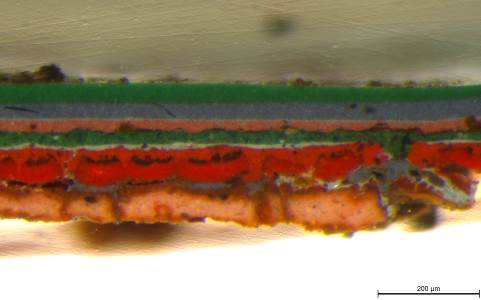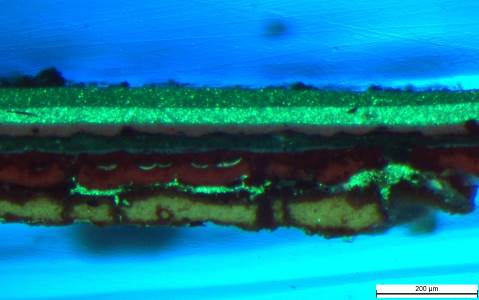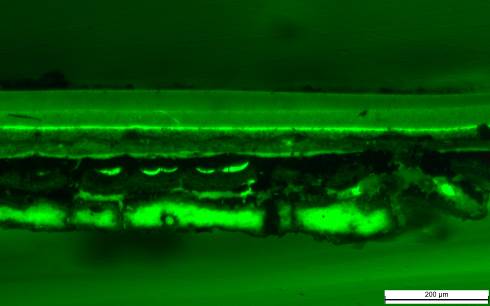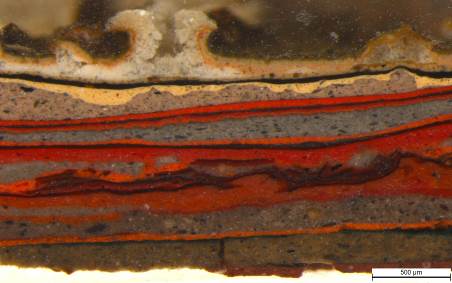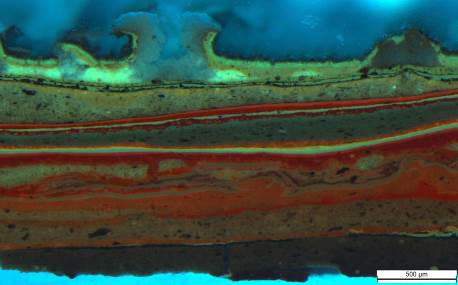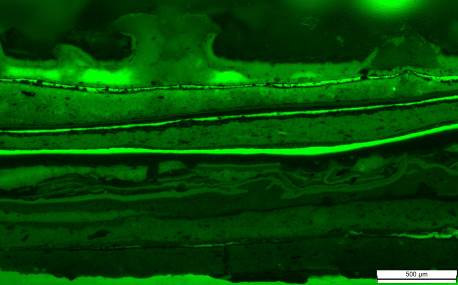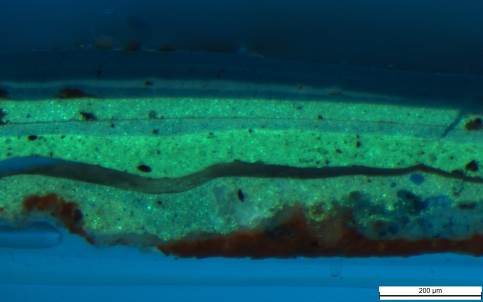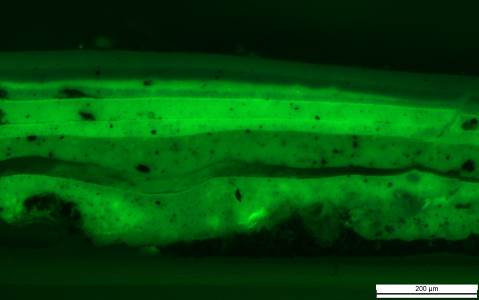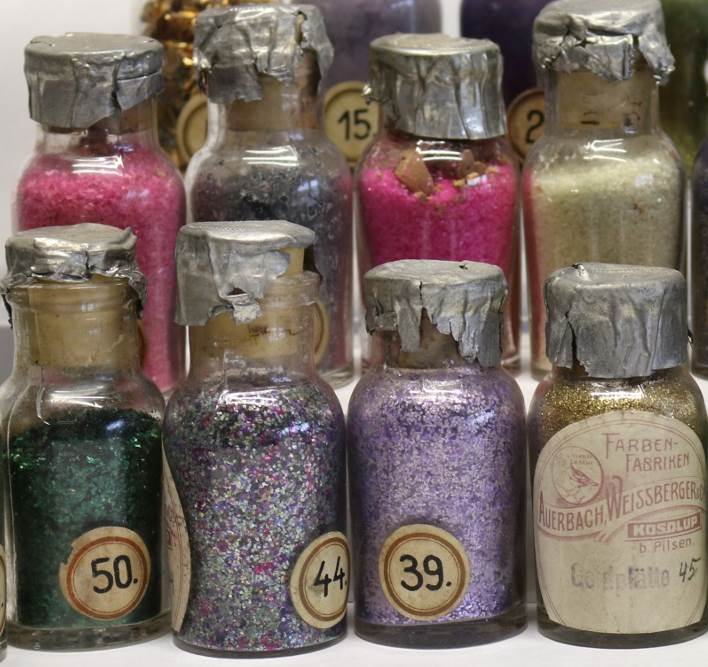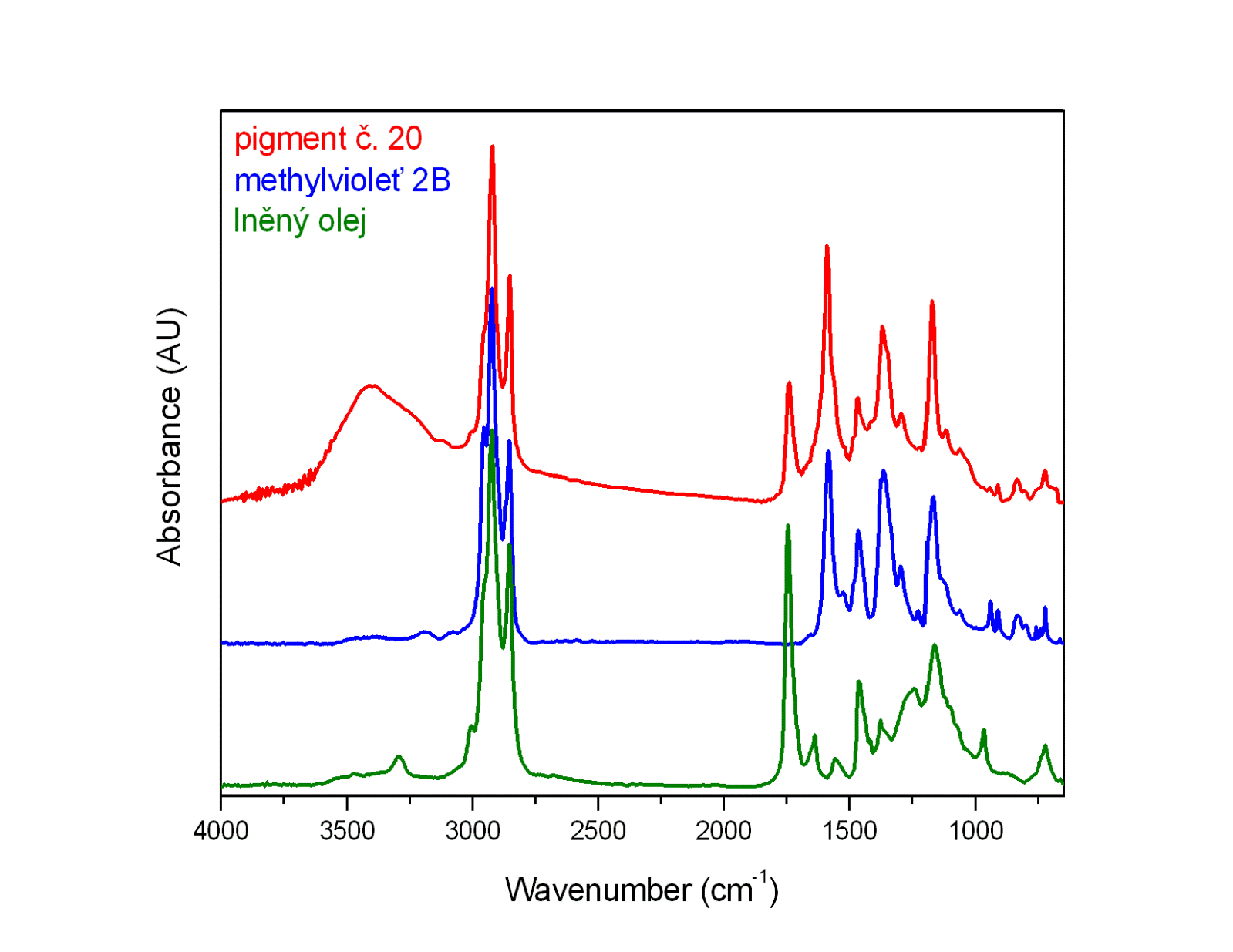One of the main tasks of the museum is to preserve and at the same time keep the collections in the best possible condition. Comprehensive care of the collection objects is provided by the Department of the Chief Conservator, under which the following specialised departments fall.
Specialized workplaces
In the system of care for the NTM collections, the restoration workshops play an irreplaceable role. Their beginnings and development mirror the vicissitudes of the museum's collection journey. The origins date back to the preparations for making the first collections accessible in 1910 (in the Schwarzenberg Palace in Hradčany). This was followed by the Prague Invalidovna, to which a facility in the new building in Letná was added after World War II.
The restoration workshop was definitively relocated to the main NTM building in Letná after the catastrophic flood in 2002. During the process of removing the consequences from the flooded collection funds, the restoration workshops played a significant role. After initial cleaning and basic conservation, all collection items underwent more detailed treatment over several years.
The main mission of the restoration workshops is to care for collection items through a full range of preventive conservation, restoration, and preparation for storage in high-quality depositories. In all interventions on collection items, maximum authenticity of the object is preserved, and all procedures are documented.
The structure, scope, and diversity of the NTM collections also reflect a very wide spectrum of treated collection items and the materials used. It is enough to realize that, in addition to the original collections documenting the history of engineering, transport, electrical engineering, and construction, other independent departments have joined, mapping further specialized areas of exact sciences, photographic and film technology, mining, metallurgy, and extending to computer science, industrial design, and medical technology. As a result, this means a very broad range of restoration activities, which imposes high demands on the expertise and material equipment of the workshops and the workers themselves.
The Department of Paper Restoration was formed by merging the department for the drying of frozen archival materials (VZA) and the Paper Restoration Atelier. VZA was established in 2004 as a specialized facility for the manual drying of archival materials damaged by the floods in 2002. In May 2005, the Czech National Commission for UNESCO took patronage over the project of manual drying of archival materials. In 2006, the jury of the Gloria musaealis competition awarded the drying facility third place in the category of Achievement of the Year 2005. In 2011, the drying of materials damaged by the 2002 floods was completed after nine years. However, this facility will continue to provide consulting and advisory services to the public and other institutions regarding water-damaged paper documents and related materials (photographic materials, etc.). To facilitate the drying of frozen archival materials, a large-capacity freezing box was built at NTM, which can provide assistance at any time after a water-related disaster for the rapid freezing of affected paper documents, thereby protecting them from mold infestation and degradation due to rot.
With the increasing number of dried archival materials, there arose a need at NTM to restore selected rare plans and designs that were damaged during the flood. For this reason, the Paper Restoration Atelier was opened in 2009, specializing in the conservation and restoration of large-scale plan documents. The facility was established with financial support from the Ministry of Culture of the Czech Republic and a donation from the Friends of Old Prague Club - SOS Architecture Archive.
Restoration of paper-based collection items (i.e., graphic sheets, posters, mining and astronomical maps, globes, historical photographs or negatives, and others) is carried out here, preserved in the collections and archives of NTM. This primarily involves their preparation for transport and long-term storage in new depositories in Čelákovice or preparing documents for presentation purposes in permanent exhibitions or exhibitions.
After completing the drying of damaged paper materials, VZA also began to engage in conservation work across a wide range of collection items, primarily paper and related materials, as well as preparing various collection items for exhibitions, loans, or final storage in NTM depositories.
Contacts
In addition to preserving collections for future generations and presenting them to the public, one of the fundamental missions of museums is scientific research of collections. The authenticity of collection objects is closely linked to the original historical material. Its preservation to the maximum extent possible and in good condition is the goal of preventive conservation and scientific research.
Collections research is an interdisciplinary process. Curator, restorer and scientist work together. Laboratories, linked to restoration and conservation departments, are part of almost museums. They use a range of exact physical and chemical methods both for the so-called restoration survey, which precedes restoration and whose results determine the course and scope of restoration work, and for long-term research to optimise the care of the collections. Since cultural heritage research is a very broad field in which a number of questions are sought to be answered (the composition of an object or its parts, its origin, its age, past repairs and alterations, etc.), a wide range of analytical methods are used (microscopy, various methods of spectral analysis, chromatographic methods, methods based on the use of X-rays, but also dendrochronology, histology, thermoluminescence, etc.). The equipment of the individual departments is based on specific needs of museum or the nature of its collections.
The NTM Chemistry Laboratory is primarily a service department for research on the restoration and conservation of the NTM collections, collaborating in the documentation of the state of degradation of collection objects and the documentation of historical production technologies. In particular, it also serves as NTM's consulting center for preventive conservation.
1. Each survey generally begins with the examination and documentation of a sample under an optical microscope. Due to the composition of the collections, the laboratory is equipped for the examination and documentation of historical materials with a high-quality classical light microscope.
The Leica M165FC fluorescence stereomicroscope is equipped with a built-in iris diaphragm for increased depth of field, a smooth and gradual zoom 16.5:1 and a trinocular camera mounting tube; the Leica DM2500M metallographic polarizing microscope is equipped with a trinocular camera mounting tube, 5x, 10x, 20x and 50x semi-Plan APOchromatics, a rotatable polarizer and a fixed analyzer. Both microscopes are connected to an external fluorescence source and a 20 Mpixel camera for digital image acquisition.

|
|
|
|
| historická tramvaj Liberec | snímek v UV modrém světle | snímek v UV zeleném světle |
|
|
|
|
| historická tramvaj Liberec | snímek v UV modrém světle | snímek v UV zeleném světle |
|
|
|
|
| původní nátěry okna, hotel Axa | snímek v UV modrém světle | snímek v UV zeleném světle |
Optical microscope images of cross sections of coating layers in incident white light and at two different wavelengths of UV light.
2. The department also has equipment in molecular spectroscopy - infrared and Raman. These two spectrometric methods are complementary, i.e. substances that do not absorb radiation from the infrared region usually have Raman spectra and vice versa.
a. Infrared microscope Used primarily to analyze organic materials (varnishes, paints, organic binders and dyes, waxes, resins, polymers, photographic materials).
Infrared microscope with adjacent Nicolet iN10MX sample compartment. A self-contained FTIR microscope using the mid-infrared region, it has a computer-controlled external beam outlet to a full-size secondary sample compartment for the use of macroscopic measuring accessories. It is equipped with an air-cooled DLaTGS detector and two liquid nitrogen cooled detectors in the infrared microscope - the MCT-A detector and the MCT linear detector array. The instrument enables the use of a number of working techniques (spectra measurement in pass-through, reflection and ATR mode) both for FTIR microscope analysis of micro samples taken from the collection objects and directly for non-destructive analysis of surface treatments of the collection objects or their parts in the adjacent sample space.

|
|
|
| Collection of historical metallic paints standards. | FTIR spectra of the historical metallic paint extract together with spectra of the standards. |
b. Raman spectrometry is mainly used in NTM for the identification of mineral pigments and fillers, crystalline substances, silicate materials, glazes, corrosion products of metals and some photomaterials.
Raman spectrometer with Nicolet DXR2 microscope with Olympus microscope (4x, 10x, 20x, 50x objectives) and variable laser (λ = 532nm - green and λ = 785nm - red laser). The beam can also be output from outside the instrument - 3D object measurement, planar analysis is also possible, depth profiling is also possible using confocal measurements.


 Raman spectrum of azurite together with the spectrum of the standard. Sample taken from the Gothic Pieta from Frýdlant (photo Ak. Mal. D. Machačová)
Raman spectrum of azurite together with the spectrum of the standard. Sample taken from the Gothic Pieta from Frýdlant (photo Ak. Mal. D. Machačová)
3. With the financial support of the Gestor copyright protection association, the NTM laboratory acquired a new optical microscope coupled with the LIBS elemental analysis method. In addition to high quality images with high depth of field, it enables elemental analysis at the microscale based on the selection of the point to be analysed (when focusing on an area with a diameter of about 5 micrometers). It is mainly used for the analysis of inorganic pigments, metal coatings, metals and alloys.
Leica DM6 optical microscope coupled with LIBS (laser induced breakdown spectroscopy) elemental analysis method.


 LIBS elemental analysis of a painting sample (metallic aluminium layer, chalk ground) together with spectra of standards.
LIBS elemental analysis of a painting sample (metallic aluminium layer, chalk ground) together with spectra of standards.
The laboratory serves as a consultation centre in the field of preventive conservation, especially for colleagues from the NTM. The following instrumentation is mainly used in this area:
1. Microfadeometer - a microdestructive spectral instrument which, in a short experiment, allows a qualified estimate of the safe light exposure of light-sensitive organic materials, mainly photographic materials, prints on paper and textiles.
 Microfadeometer assembly, light guide fibers are focused on the standard.
Microfadeometer assembly, light guide fibers are focused on the standard.

Curves describing simulated fading of blue wool standards at defined illumination over time.
2. Luminometer - a hand-held measuring device that can be used to make an educated estimate of microbial activity (the presence of living microorganisms - fungi and bacteria) on the surface of collection objects or storage furniture quickly and without cultivation.

3. Thermohygrometer instrument for instantaneous measurement of temperature, relative humidity and dew point. In addition to temperature and humidity, the Elsec 765 also measures illuminance and the proportion of UV radiation.
4. The handheld colorimeter can be used in the evaluation of colour changes of surfaces caused by degradation factors, especially light.

